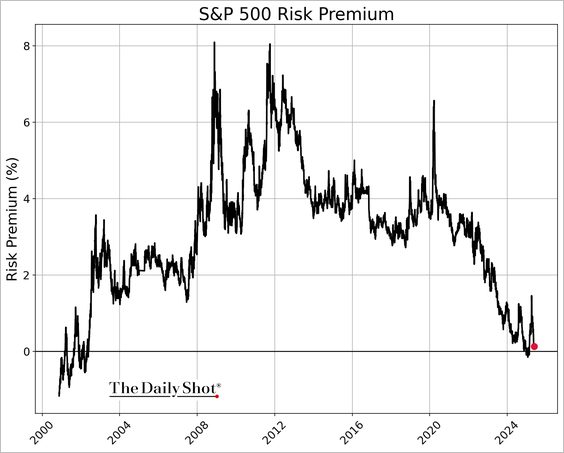A dangerous feature of market cycles are the multi-year periods between bear markets when assets mostly go up, and buy-and-hold-at-every-price strategies look superior.
But consider some numbers:
In scenario one, say a person puts $1 million into stocks and corporate bonds, or funds of them, near the outset of a roaring bull market. Over the next 5 years they see their portfolio increase by 50%, in fits and starts, to total $1.5 million at the end of year-5 (averaging the much targeted 10% a year! excellent!); before falling 50% in the bear market that follows during years 6 and 7, where their 1.5m turns into 750k, 250K below their original deposit.
Now, consider a second scenario where one follows a value discipline that buys corporate securities within certain parameters but requires avoiding them and moving capital increasingly into cash as the cycle ages, valuations climb, and the risk of loss far outweighs the prospects for further return. In this case, say returns look like this over the same seven years:
Year 1: 7%
Year 2: 5%
Year 3: 4%
Year 4: 3%
Year 5: 2%
Year 6: 1%
Year 7: 1%
At the end of year-5, the gross gain of this tortoise-style portfolio would be 22.8% or 4.6% a year; less than half of the 50% (10% a year) boasted by the hare-style long-always portfolio. So, by the end of year-5, if not much sooner, most people make the classic error of firing the tortoise manager and moving to the hare.
By the time the bear market hits in years 6 and 7, the value-based approach is widely unloved as it has capital largely, if not completely, out of equities and corporate bonds and into cash and government treasuries (hence the lower t-bill like returns in years 4 through 7).
But which approach is the winner at the end of the full market cycle? Why, value-based of course.
The value-based method netted a total gross gain of 25% or 3.24% a year, compared with -25% or -4.03% a year for the long-always ‘no-value’ approach in scenario one.
Not only does the ‘no-value’ approach produce negative returns over 7 years, but it must also typically wait several more years before it can grow back the $1 million it started with. That’s if the owners are able or willing to hold and hope that long–the reality is that most won’t. Most liquidate in horror after the losses and are not there for the rebound, never mind being able or willing to use cash to buy assets once they come on clearance sale.
The value-approach, on the other hand, is designed to deploy strategically-stored cash to buy corporate securities after the bear market, when yields are much higher and capital risk much lower–enhancing returns further in the holding period thereafter.
The bottom line is that gauging investment performance based on the amount of asset appreciation through the up portion of a market cycle, without consideration for the down cycle, and capital risk embedded in each approach, is illogical and self-defeating. It’s like playing the game of Snakes and Ladders with the presumption that snakes are not a major recurring setback.
This segment has some worthwhile discussion on topic.
The investment sea change. Value is out, growth is in and passive keeps beating active. Financial thought leaders James Grant and Jason Zweig weigh in. Here is a direct video link.


